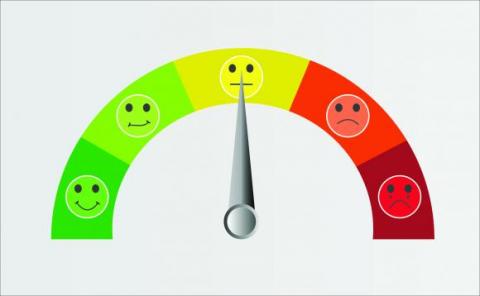 If you’ve ever visited the emergency department with appendicitis, or you’re one of the 100 million U.S. adults who suffer from chronic pain, you’re familiar with a row of numbered faces, with expressions from smiling to grimacing, used to indicate pain levels.
If you’ve ever visited the emergency department with appendicitis, or you’re one of the 100 million U.S. adults who suffer from chronic pain, you’re familiar with a row of numbered faces, with expressions from smiling to grimacing, used to indicate pain levels.
Despite that tool’s widespread use, some researchers say a more empirical approach would better serve both patients and the physicians who provide care.
“Sadly, this scale of smiley faces, called the visual analogue scale, is the gold-standard pain-assessment tool,” said Carl Saab, an associate professor of neuroscience and neurosurgery (research) at Brown University and Rhode Island Hospital. “Our goal is to associate specific brain activity with various scores on the numerical scale to make pain assessment more objective. We want to help patients with chronic pain and their physicians get into agreement about pain level so it is better managed and diagnosed, which may reduce the over-prescription of opioids.”
Saab and his colleagues have developed an electroencephalography-based test to objectively measure pain. Electroencephalography (EEG) is a method that measures brain activity using electrodes placed on the scalp. The brain activity is measured in the form of oscillations or “waves” of a certain frequency, somewhat like the specific frequency that dictates a radio station.
A frequency that correlates with pain in animals is called the “theta band,” Saab said. Computational analysis of theta brain waves to determine their power can be used to objectively measure pain in rodents and humans in a non-invasive manner, he added.
In a Nov. 6 paper published in Scientific Reports, Saab’s team reported that measuring the power of theta waves using EEG is an effective and direct test of pain and potential pain medication efficacy in pre-clinical animal models.